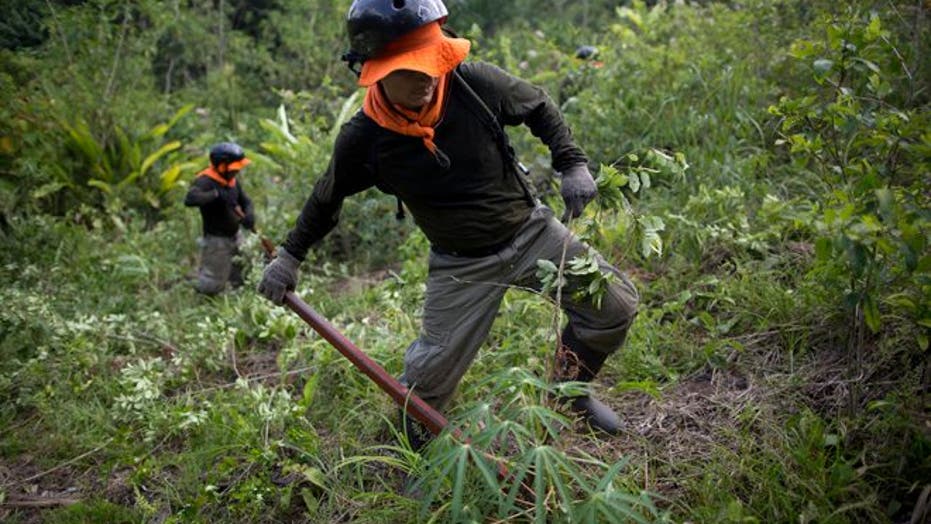NUEVA ESPERANZA, Peru (AP) – Destroying coca plants is grueling work.
Using a shovel-handled tool with a cylindrical head, Peruvian coca eradicators tear out by their roots the plants that are used to make cocaine.
The plant destroyers earn $17 a day, or about $510 a month, which in Peru is a little more than double the minimum wage. It's a lot more than the average $2 a day earned by farmers who often live in miserable conditions.
But the eradicators' work is extremely hard as they labor under a hot sun and walk as much as four hours daily — two hours to and two hours from the coca-growing zones.
On a recent day, a group of 300 coca plant destroyers began work early in Nueva Esperanza, a remote village in the central Amazon jungle. They disembarked from four UH-2H helicopters owned by the U.S. government, which funds much of the work.
About 100 Peruvian narcotics police with assault rifles guarded them, even though a coca eradicator hasn't been killed on the job since 2012, the year Peru was declared the world's top cocaine producer. The program's director, Juan Zarate, said 46 people have died in the course of destroying the plants since the effort began in 1983. There are about 2,300 eradicators in all, he said.
Although the eradicators destroyed a record 136,000 acres of coca plants in 2013-14, they haven't pulled a single bush out of the main production area — the Apurimac, Ene and Mantaro river valley, which lies to the south. There are an estimated 15 drug trafficking groups in that region.
Coca farmers, like the eradicators, are typically migrants from dirt-poor highlands communities. The growers usually look on in silence as members of the eradication team destroy their plants. Children playing in a river watch the workers march by.
The eradicators sleep under plastic sheets tied to tree trunks in forests denuded by coca cultivators. Sometimes they are lucky enough to be able to pitch camp beside a river where they can wash off the day's grit.
Once a day, helicopters arrive from their base in Ciudad Constitucion with clean water and hot food. The eradicators work eight days in the jungle, then get eight days off.
On the final day of one eradication mission, women and children who lost their crops nevertheless appear hopeful. They know the visitors will probably have leftover fruit and cookies from their military rations, and will be happy to share them with the people they have just deprived of their livelihood.

